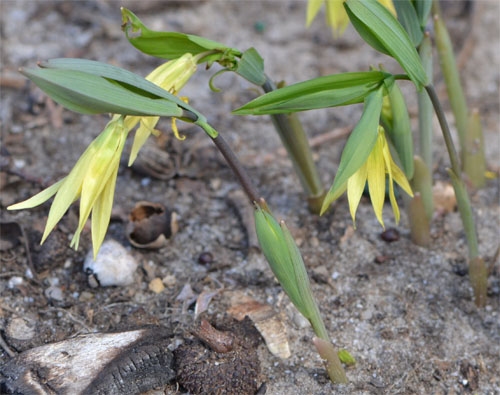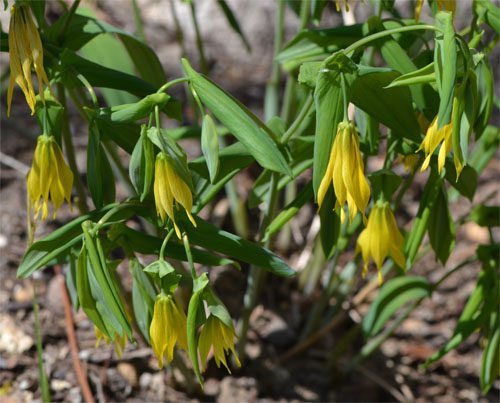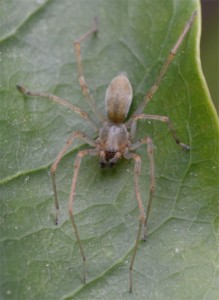 Honestly, it may take a quiz show and the willingness of the participants (spiders in this case) to help identify the right species of sac spider. The native sac spider (Cheiracanthium inclusum) is very similar to the one introduced from Europe in 1978 (Cheiracanthium mildei). In the picture from my yard I believe I have the latter on my hand, but I am not 100% sure, not even close…
Honestly, it may take a quiz show and the willingness of the participants (spiders in this case) to help identify the right species of sac spider. The native sac spider (Cheiracanthium inclusum) is very similar to the one introduced from Europe in 1978 (Cheiracanthium mildei). In the picture from my yard I believe I have the latter on my hand, but I am not 100% sure, not even close…
Sac spiders can be found walking about on foliage; under leaf litter, stones, and boards; on buildings under the windowsills and siding; and in our homes. This individual was found resting on a house plant I have outside on the deck in the summer. It was not there when I put the plant outside, so it did not migrate to the outdoors.
Both species are of similar size (females 5 to 10 millimeters; males 4 to 8 millimeters) and coloration. Apparently Cheiracanthium inclusum is a light yellow to cream color with dark brown jaws (chelicerae), tips of the tarsi, and palps. Cheiracanthium mildei has a slightly greenish tinge to its abdomen and a pale yellow cephalothorax. The chelicerae, tarsi, and palps are similar to those of Cheiracanthium inclusum . Both spiders have a slightly darker dorsal stripe running lengthwise down the abdomen. Confused yet? I may need a microscope to really know what I am dealing with here.
In general, sac spider retreats may be found outdoors under objects or indoors. They build hide-outs which are simple silken tubes or sacs in which the spiders hide during the daytime. In homes with light, neutral-colored walls and ceilings, the retreats may go unnoticed, as they are small and blend in with the background coloration.

Who am I? Cheiracanthium inclusum or Cheiracanthium mildei?
The agrarian sac spiders deposit their eggs in June or July. The eggs are loosely deposited within a silken sac, and the female remains nearby to guard them. Cheiracanthium inclusum is more often encountered outside and they deposit their eggs on the undersides of leaves. Cheiracanthium mildei is found more often within human-made structures and deposits almost exclusively indoors. These spiders actively hunt for prey rather than capturing it within a web. Often these spiders encounter humans and bite when they become trapped between a person’s skin and sheets or clothing. These two species of Cheiracanthium account for a significant number of human bites. Although these bites are painful, they normally do not result in anything serious.
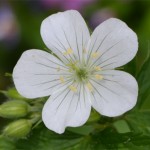 I was very happy to see this fall addition bloom for the first time – I wasn’t quite sure which plants were going to deliver the traditional blue-purple flowers, and which ones were the alba variety. As it turned out they ended up in the right spot juxtaposed with the pink flowers of the creeping phlox. Besides the different color, this white geranium is also very unforgiving of dry conditions. In rich soil with adequate watering, it will keep producing flowers even through part of the summer.
I was very happy to see this fall addition bloom for the first time – I wasn’t quite sure which plants were going to deliver the traditional blue-purple flowers, and which ones were the alba variety. As it turned out they ended up in the right spot juxtaposed with the pink flowers of the creeping phlox. Besides the different color, this white geranium is also very unforgiving of dry conditions. In rich soil with adequate watering, it will keep producing flowers even through part of the summer.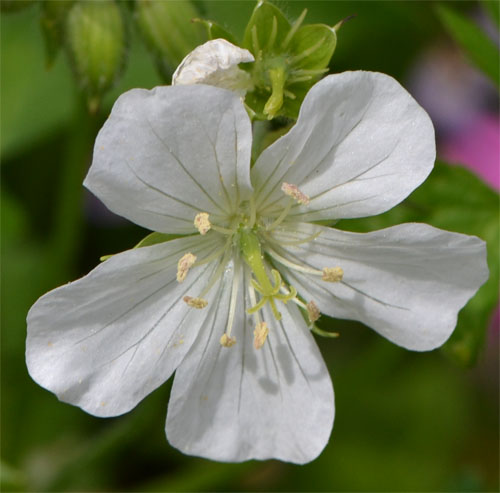

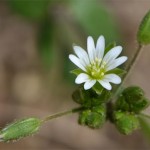 It makes sense to discuss these two plants in the same blog, as they are both very common, look very much alike, and can often be found next to one another… Both forms of chickweed have leaves that are elliptical in shape and alternate on the stem. Common chickweed leaves are hairless while the mouse ear chickweed leaves are covered in tiny hairs. The flowers are small and white, and extremely deeply lobed – If you said there are 10 petals you would be wrong – there are only 5. Mouse ear chickweed flowers are a bit smaller and more oval than that of the common chickweed.
It makes sense to discuss these two plants in the same blog, as they are both very common, look very much alike, and can often be found next to one another… Both forms of chickweed have leaves that are elliptical in shape and alternate on the stem. Common chickweed leaves are hairless while the mouse ear chickweed leaves are covered in tiny hairs. The flowers are small and white, and extremely deeply lobed – If you said there are 10 petals you would be wrong – there are only 5. Mouse ear chickweed flowers are a bit smaller and more oval than that of the common chickweed.
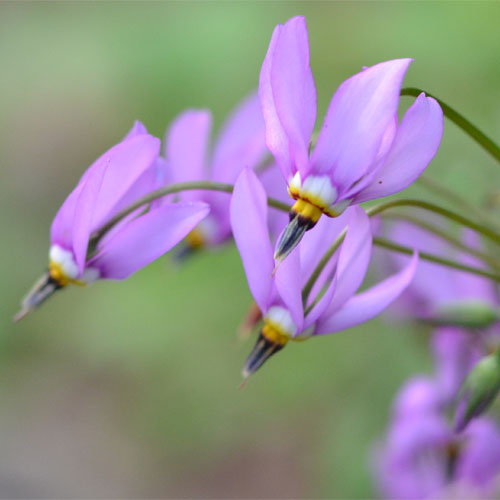
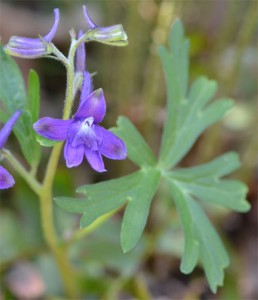 Dwarf larkspur is somewhat of an unexpected guest in my yard – just like some of those mail order brides may not be exactly what you expected, I acquired some mail order rootstock for what I thought was dutchman’s breeches. It turned out to be Delphinium tricorne instead, which calls the mid-Atlantic states and the midwest home. The plant contains an alkaloid that is poisonous to grazing cattle, but I don’t have to worry about that becoming an issue in my garden. Not knowing the extent of the effects of the alkaloid on humans, I would use caution around the plant particularly with kids and pets. Despite my layman’s warning, there are some documented medicinal uses for the plant.
Dwarf larkspur is somewhat of an unexpected guest in my yard – just like some of those mail order brides may not be exactly what you expected, I acquired some mail order rootstock for what I thought was dutchman’s breeches. It turned out to be Delphinium tricorne instead, which calls the mid-Atlantic states and the midwest home. The plant contains an alkaloid that is poisonous to grazing cattle, but I don’t have to worry about that becoming an issue in my garden. Not knowing the extent of the effects of the alkaloid on humans, I would use caution around the plant particularly with kids and pets. Despite my layman’s warning, there are some documented medicinal uses for the plant.

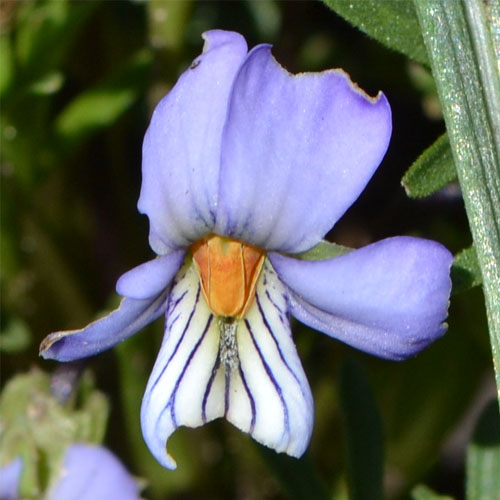


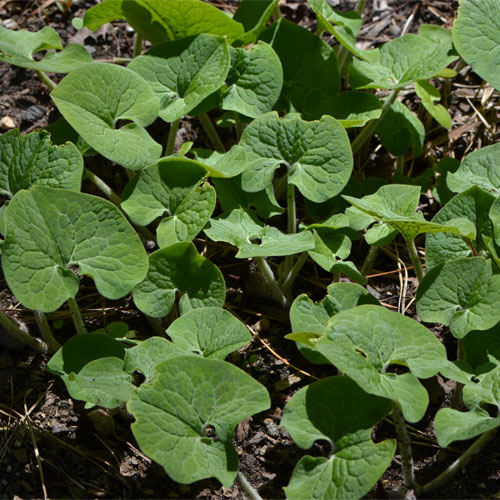

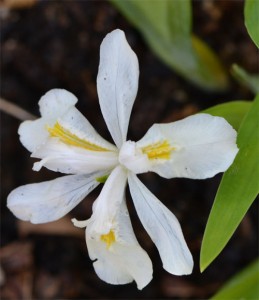 Just like the common
Just like the common 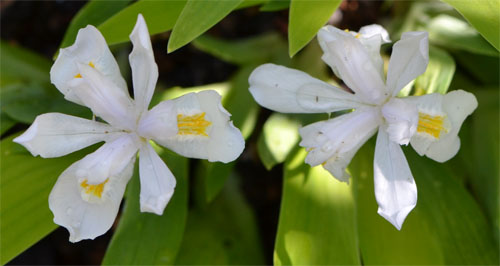
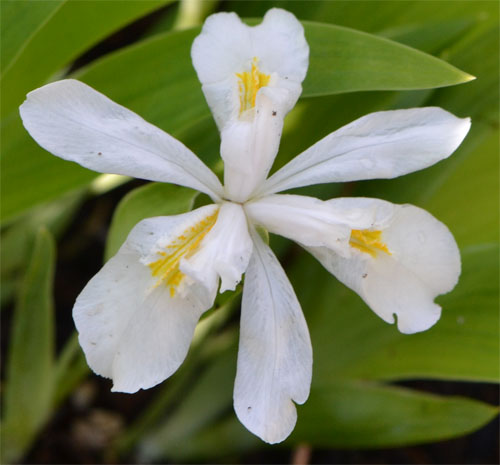
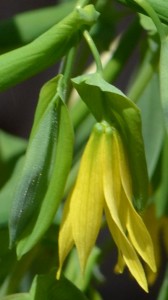 When I planted large bellwort (Uvularia grandiflora) last year, I had no idea what I was in for. I had acquired the plants, flowerless and sorry looking, at a discount at Mahoney’s and unlike Dickens I had no great expectations. It is now the middle of April and the plants have pushed through the soil in record speed. They had barely surfaced when the flowers emerged. I love everything about this plant, from the light bluish-green leaves to the jewel like golden-white flowers. The singular plants from last year have emerged as clumps, and I am anticipating / hoping that they will spread among the christmas ferns and ostrich ferns already present. The area I selected has always given me problems – it’s fairly sunny until the oaks above produce their leaves, and from then on it turns into a mottled sunlight and full shade area over the course of the day. The land has a gentle slope to it; just enough to have the occasional heavy downpour wash away the top soil and the seedlings within. The Uvularia grandiflora may remedy this as the rootstock and plant stems are holding the soil in place better than any other plant I have tried – at least so far – we haven’t seen rain in over a month – the real test will be later this weekend when heavy downpours are expected. I’ve read that large bellwort can easily be propagated by dividing the clumps and by taking cuttings from the root stock. It may also propagate from seed, although that seems to be much less reliable.
When I planted large bellwort (Uvularia grandiflora) last year, I had no idea what I was in for. I had acquired the plants, flowerless and sorry looking, at a discount at Mahoney’s and unlike Dickens I had no great expectations. It is now the middle of April and the plants have pushed through the soil in record speed. They had barely surfaced when the flowers emerged. I love everything about this plant, from the light bluish-green leaves to the jewel like golden-white flowers. The singular plants from last year have emerged as clumps, and I am anticipating / hoping that they will spread among the christmas ferns and ostrich ferns already present. The area I selected has always given me problems – it’s fairly sunny until the oaks above produce their leaves, and from then on it turns into a mottled sunlight and full shade area over the course of the day. The land has a gentle slope to it; just enough to have the occasional heavy downpour wash away the top soil and the seedlings within. The Uvularia grandiflora may remedy this as the rootstock and plant stems are holding the soil in place better than any other plant I have tried – at least so far – we haven’t seen rain in over a month – the real test will be later this weekend when heavy downpours are expected. I’ve read that large bellwort can easily be propagated by dividing the clumps and by taking cuttings from the root stock. It may also propagate from seed, although that seems to be much less reliable.